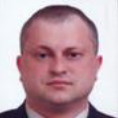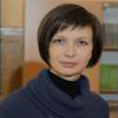International Journal of Image, Graphics and Signal Processing (IJIGSP)
IJIGSP Vol. 16, No. 3, 8 Jun. 2024
Cover page and Table of Contents: PDF (size: 1071KB)
Face Mask Recognition by the Viola-Jones Method Using Fuzzy Logic
PDF (1071KB), PP.39-51
Views: 0 Downloads: 0
Author(s)
Index Terms
Artificial Intelligent, Educational institutions, Fuzzy Logic, Haar cascade, Programming, Python, Viola-Jones method
Abstract
In the work, the software implementation of the face mask recognition system using the Viola-Jones method and fuzzy logic is performed. The initial images are read from digital video cameras or from graphic files.
Detection of face, eye and mouth positions in images is performed using appropriate Haar cascades. The confidence of detecting a face and its features is determined based on the set parameters of Haar cascades.
Face recognition in the image is performed based on the results of face and eye detection by means of fuzzy logic using the Mamdani knowledge base. Fuzzy sets are described by triangular membership functions. Face mask recognition is performed based on the results of face recognition and mouth detection by means of fuzzy logic using the Mamdani knowledge base. Comprehensive consideration of the results of different Haar cascades in the detection of face, eyes and mouth allowed to increase the accuracy of recognition face and face mask.
The software implementation of the system was made in Python using the OpenCV, Scikit-Fuzzy libraries and Google Colab cloud platform. The developed recognition system will allow monitoring the presence of people without masks in vehicles, in the premises of educational institutions, shopping centers, etc. In educational institutions, a face mask recognition system can be useful for determining the number of people in the premises and for analyzing their behavior.
Cite This Paper
Serhiy Balovsyak, Oleksandr Derevyanchuk, Vasyl Kovalchuk, Hanna Kravchenko, Maryna Kozhokar, "Face Mask Recognition by the Viola-Jones Method Using Fuzzy Logic", International Journal of Image, Graphics and Signal Processing(IJIGSP), Vol.16, No.3, pp. 39-51, 2024. DOI:10.5815/ijigsp.2024.03.04
Reference
[1]S. Sen, and K. Sawant, “Face Mask Detection for Covid_19 Pandemic Using Pytorch in Deep Learning,” IOP Conf. Ser. Mater. Sci. Eng. 2021, doi: 10.1088/1757-899X/1070/1/012061.
[2]Alex Krizhevsky, Ilya Sutskever and Geoffrey E. Hinton, “ImageNet classification with deep convolutional neural networks,” Advances in Neural Information Processing Systems, pp. 1097–1105, 2012.
[3]Walid Hariri, “Efficient masked face recognition method during the COVID-19 pandemic,” Signal, Image and Video Processing, vol. 16, pp. 605–612, 2021.
[4]J.V.B. Benifa, C. Chola, A.Y. Muaad, M.A.B. Hayat, M.B. Bin Heyat, R. Mehrotra, F. Akhtar, H.S. Hussein, D.L.R. Vargas, Á.K. Castilla, and et al. “FMDNet: An Efficient System for Face Mask Detection Based on Lightweight Model during COVID-19 Pandemic in Public Areas,” Sensors, vol. 23, pp. 1-15, 2023, doi: 10.3390/s23136090.
[5]Wenqi Wu, Yingjie Yin, Xingang Wang and De Xu, “Face Detection With Different Scales Based on Faster R-CNN,” IEEE Transactions on Cybernetics, vol. 49, no. 11, pp. 4017-4028, 2019.
[6]Deepa Indrawal, and Archana Sharma, "Multi-Module Convolutional Neural Network Based Optimal Face Recognition with Minibatch Optimization", International Journal of Image, Graphics and Signal Processing, vol. 14, no. 3, pp. 32-46, 2022, doi:10.5815/ijigsp.2022.03.04.
[7]Yomna M. Elbarawy, Neveen I. Ghali, and Rania Salah El-Sayed, " Facial Expressions Recognition in Thermal Images based on Deep Learning Techniques", International Journal of Image, Graphics and Signal Processing, vol. 11, no. 10, pp. 1-7, 2019, doi: 10.5815/ijigsp.2019.10.01.
[8]Htwe Pa Pa Win, Phyo Thu Thu Khine, and Zon Nyein Nway, "Emotion Recognition from Faces Using Effective Features Extraction Method", International Journal of Image, Graphics and Signal Processing, vol. 13, no. 1, pp. 50-57, 2021, doi: 10.5815/ijigsp.2021.01.05.
[9]Leslie Ching Ow Tiong, Song Tae Kim, and Yong Man Ro, “Multimodal Facial Biometrics Recognition: Dual-stream Convolutional Neural Networks with Multi-feature Fusion Layers,” Image and Vision Computing, vol. 12, pp. 2020.
[10]G. Guo, H. Wang, Y. Yan, J. Zheng, and B. Li, “A Fast Face Detection Method via Convolutional Neural Network,” Neurocomputing, vol. 395, pp. 128–137, 2020, doi: 10.1016/j.neucom.2018.02.110.
[11]J. Zhang, X. Wu, S.C.H. Hoi, and J. Zhu, “Feature Agglomeration Networks for Single Stage Face Detection,” Neurocomputing, vol. 380, pp. 180–189, 2020, doi: 10.1016/j.neucom.2019.10.087.
[12]Marwa Y. Mohammed, “Face Recognition based Texture Analysis Methods,” International Journal of Image, Graphics and Signal Processing, vol. 11, no. 7, pp. 1-8, 2019, doi: 10.5815/ijigsp.2019.07.01.
[13]Turker Tuncer, Sengul Dogan, and Erhan Akbal, “Discrete Complex Fuzzy Transform based Face Image Recognition Method”, International Journal of Image, Graphics and Signal Processing, vol. 11, no. 4, pp. 1-7, 2019, doi: 10.5815/ijigsp.2019.04.01.
[14]Surbhi Gupta, Kutub Thakur, and Munish Kumar, “2D-human face recognition using SIFT and SURF descriptors of face’s feature regions,” The Visual Computer, vol. 37, pp. 447–456, 2021.
[15]Farid Ayeche, and Adel Alti, “HDG and HDGG: an extensible feature extraction descriptor for effective face and facial expressions,” Pattern Analysis and Applications, vol. 24, pp. 1095–1110, 2021.
[16]DaeEun Kim, Dosik Hwang, Intelligent Imaging and Analysis. Switzerland, Basel: MDPI, 2020.
[17]R. Gonzalez, R. Woods, Digital image processing. 4th edidion, Pearson/ Prentice Hall, NY, 2018.
[18]Serhiy V. Balovsyak, and Khrystyna S. Odaiska," Automatic Highly Accurate Estimation of Gaussian Noise Level in Digital Images Using Filtration and Edges Detection Methods,” International Journal of Image, Graphics and Signal Processing (IJIGSP), vol. 9, no. 12, pp. 1-11, 2017, doi: 10.5815/ijigsp.2017.12.01.
[19]S.V. Balovsyak, and Kh. S. Odaiska, “Automatic Determination of the Gaussian Noise Level on Digital Images by High-Pass Filtering for Regions of Interest,” Cybernetics and Systems Analysis, vol. 54, no. 4, pp. 662-670, 2018, doi: 10.1007/s10559-018-0067-3.
[20]S.V. Balovsyak, O.V. Derevyanchuk, I.M. Fodchuk, O.P. Kroitor, Kh.S. Odaiska, O.O. Pshenychnyi, A. Kotyra, and A. Abisheva, “Adaptive oriented filtration of digital images in the spatial domain,” Proc. SPIE 11176, Photonics Applications in Astronomy, Communications, Industry, and High-Energy Physics Experiments, vol. 11176, pp. 111761A-1–111761A-6, 2019, doi: 10.1117/12.2537165.
[21]Ihor Tereikovskyi, Zhengbing Hu, Denys Chernyshev, Liudmyla Tereikovska, Oleksandr Korystin, and Oleh Tereikovskyi, “The Method of Semantic Image Segmentation Using Neural Networks,” International Journal of Image, Graphics and Signal Processing), vol. 14, no. 6, pp. 1-14, 2022, doi: 10.5815/ijigsp.2022.06.01.
[22]O.V. Derevyanchuk, H.O. Kravchenko, Y.V. Derevianchuk, and V.V. Tomash, “Recognition images of broken window glass,” Proceedings of SPIE, vol. 12938, pp. 210-213, 2024, doi: 10.1117/12.3012995.
[23]V.M. Kramar, O.V. Pugantseva, A.V. Derevyanchuk, “Spatial confinement, self-polarization and exciton-phonon interaction effect on the location of exciton line in lead iodide nanofilms,” Low Temperature Physics, vol. 40, no. 8, pp. 766–770, 2014, doi: 10.1063/1.4892649.
[24]S.V. Balovsyak, O.V. Derevyanchuk, and I.M. Fodchuk, “Method of calculation of averaged digital image profiles by envelopes as the conic sections,” Advances in Intelligent Systems and Computing, Hu Z., Petoukhov S., Dychka I., He M. (Eds.), Springer International Publishing, vol. 754, pp. 204-212, 2019, doi: 10.1007/978-3-319-91008-6_21.
[25]S.V. Balovsyak, O.V. Derevyanchuk, H.O. Kravchenko, O.P. Kroitor, and V.V. Tomash, “Computer system for increasing the local contrast of railway transport images,” Proc. SPIE, Fifteenth International Conference on Correlation Optics, vol. 12126, pp. 121261E1-7, 2021, doi: 10.1117/12.2615761.
[26]S. Balovsyak, Kh. Odaiska, O. Yakovenko, and I. Iakovlieva, “Adjusting the Brightness and Contrast parameters of digital video cameras using artificial neural networks,” Proceedings of SPIE, vol. 12938. pp. 129380I-1 - 129380I-4, 2024, doi: 10.1117/12.3009429.
[27]Raveendra K, Ravi J, and Khalid Nazim Abdul Sattar, “Face Recognition Using Modified Histogram of Oriented Gradients and Convolutional Neural Networks,” International Journal of Image, Graphics and Signal Processing, vol. 15, no. 5, pp. 60-76, 2023, doi: 10.5815/ijigsp.2023.05.05.
[28]Paul Viola, and Michael J. Jones, “Robust Real-Time Face Detection,” International Journal of Computer Vision, vol. 57, no. 2, pp. 137-154, 2004.
[29]A. R. Fayek, “Fuzzy Logic and Fuzzy Hybrid Techniques for Construction Engineering and Management”, Journal of Construction Engineering and Management, vol. 146, no. 7, pp. 1-12, 2020. doi: 10.1061/(ASCE)CO.1943-7862.0001854.
[30]D.S. Hooda, and Vivek Raich, Fuzzy Logic Models. An Introduction. U.K., Oxford, Alpha Science International Ltd, 2017.
[31]Face Detection with Python using OpenCV, URL: https://www.datacamp.com/community/tutorials/face-detection-python-opencv (Last accessed: 20.11.2023).
[32]OpenCV People Counter, URL: https://www.pyimagesearch.com/2018/08/13/opencv-people-counter/ (Last accessed: 21.11.2023).
[33]Face Recognition System Using Google Colab, URL: https://levelup.gitconnected.com/face-recognition-system-using-google-colab-ccca1d56f5f3 (Last accessed: 21.11.2023).
[34]Vasyl Lytvyn, Olga Lozynska, Dmytro Uhryn, Myroslava Vovk, Yuriy Ushenko, and Zhengbing Hu, “Information Technologies for Decision Support in Industry-Specific Geographic Information Systems based on Swarm Intelligence,” International Journal of Modern Education and Computer Science, vol. 15, no. 2, pp. 62-72, 2023. doi: 10.5815/ijmecs.2023.02.06.
[35]Oleh Prokipchuk, Victoria Vysotska, Petro Pukach, Vasyl Lytvyn, Dmytro Uhryn, Yuriy Ushenko, and Zhengbing Hu, “Intelligent Analysis of Ukrainian-language Tweets for Public Opinion Research based on NLP Methods and Machine Learning Technology,” International Journal of Modern Education and Computer Science, vol. 15, no. 3, pp. 70-93, 2023. doi: 10.5815/ijmecs.2023.03.06.
[36]4-Cascade_classification.ipynb, URL: https://colab.research.google.com/ github/computationalcore/introduction-to-opencv/blob/master/notebooks/4-Cascade_classification.ipynb. (Last accessed: 20.11.2023).
[37]Zaporizhzhia State Medical and Pharmaceutical University, URL: https://mphu.edu.ua/new_3368.html (Last accessed: 22.11.2023).
[38]O.V. Derevyanchuk, V.I. Kovalchuk, V.M. Kramar, H.O. Kravchenko, D.V. Kondryuk, А.V. Kovalchuk, and B.V. Onufriichuk, “Implementation of STEM education in the process of training of future specialists of engineering and pedagogical specialties,” Proceedings of SPIE, vol. 12938, pp. 214-217, 2024, doi: 10.1117/12.3012996.
[39]V. Kovalchuk, A. Androsenko, А. Boiko, V. Tomash, O. Derevyanchuk, “Development of Pedagogical Skills of Future Teachers of Labor Education and Technology by means of Digital Technologies,” International Journal of Computer Science and Information Security, vol. 22 (9), pp. 551-560, 2022, doi: 10.22937/IJCSNS.2022.22.9.71.
[40]S. Balovsyak, O. Derevyanchuk, H. Kravchenko, Y. Ushenko, and Z. Hu, “Clustering Students According to their Academic Achievement Using Fuzzy Logic,” International Journal of Modern Education and Computer Science”, vol. 15, no. 6, pp. 31-43, 2023, doi: 10.5815/ijmecs.2023.06.03.




